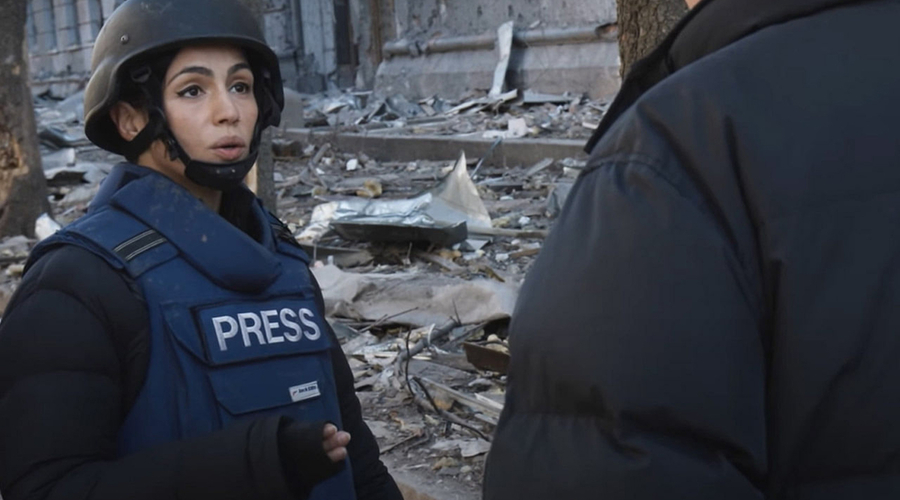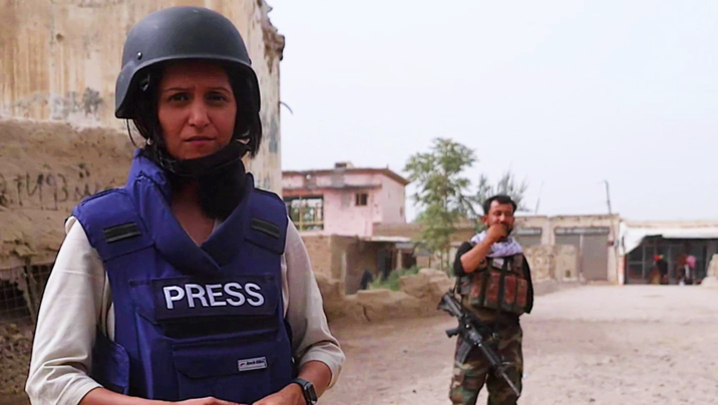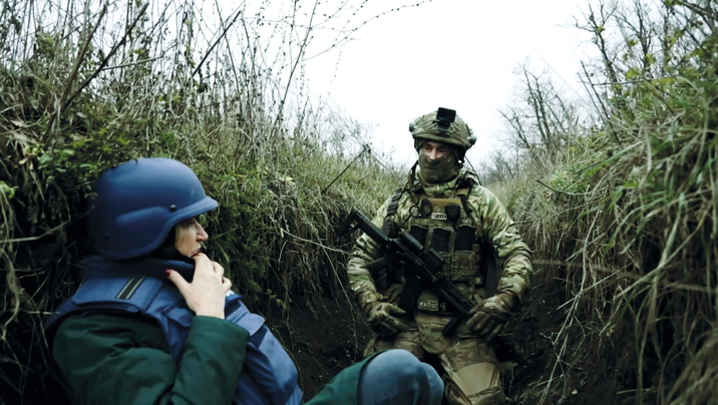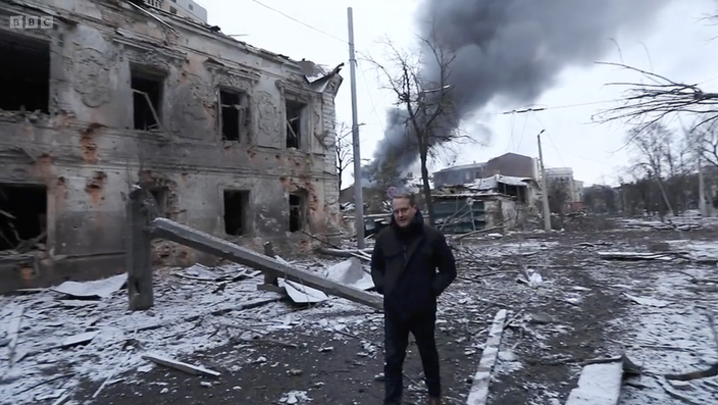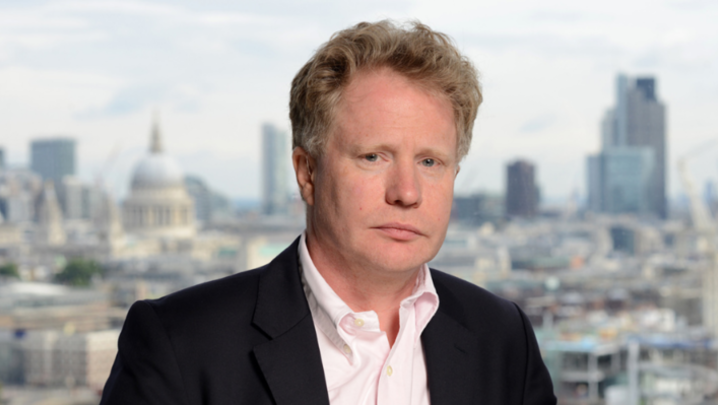An RTS event hears how TV reporters and editorial teams are meeting the challenges of covering the war in Ukraine.
As the Ukraine conflict again demonstrates, war reporting requires brave, experienced, and knowledgeable reporters and crews in the field, alongside exacting judgements and guidance from editorial and production teams back in the UK.
Channel 5 News presenter and erstwhile Dr Sian Williams - who has reported on wars, disasters and other major news events - who hosted the RTS discussion “The fog of war: Ukraine – broadcasters on the front line”, pointed out that, in the first three weeks of the war, five journalists had been killed and 35 injured.
Two of those hurt were from Sky News. Their team, including reporter Stuart Ramsay, were ambushed and shot by Russian fighters on the road to Kyiv. They are now at home recuperating, said Sky’s director of news, Jonathan Levy. “Andrii [Lytvynenko], the local producer, is in Lviv, of course. He’s with his girlfriend and family but the four-strong Sky team is back and doing OK. But it was clearly a very difficult and harrowing experience for them.
“As it turned out, they were the fortunate ones. People have had similar experiences since, who have been less fortunate. They’re very conscious of that, as we all are.”
Hind Hassan, a correspondent for Vice News who is covering the war, was only too aware of the dangers. She joined the panel live from Ukraine while travelling by van from Kharkiv to a safer location. “It’s been difficult, definitely,” she said. “There have been moments of quiet, but there were a few days where there was an increase in air strikes on the city and you could hear ingoing and outgoing fire, and we were very close to some of those strikes. We are the lucky ones who get to leave the city and go somewhere safe, hopefully. You know that there are many people who don’t have that privilege.”
While luck plays a part in keeping war reporting teams safe, it was the Sky team’s collective experience that helped them survive the attack and informed “everything, from where to put themselves in the car in that particular situation to how to extract themselves, to get away from the situation, and all the subsequent responses”, said Levy.
Editors are conscious that they need to ensure there is a range of experience in the teams to help train newer staff. “Everyone who is going to do this kind of work is going to do it for the first time at some point,” explained Levy. “The idea is to put them with people who have more experience, from whom they can learn, and that the overall blend of the team is the correct one and a safe one.”
As Williams reminded everyone, this terrifying European war comes after two years of a global pandemic, which had already stretched the resources of news teams and tested their mental health. Covid had also had a direct impact on some of the coverage.
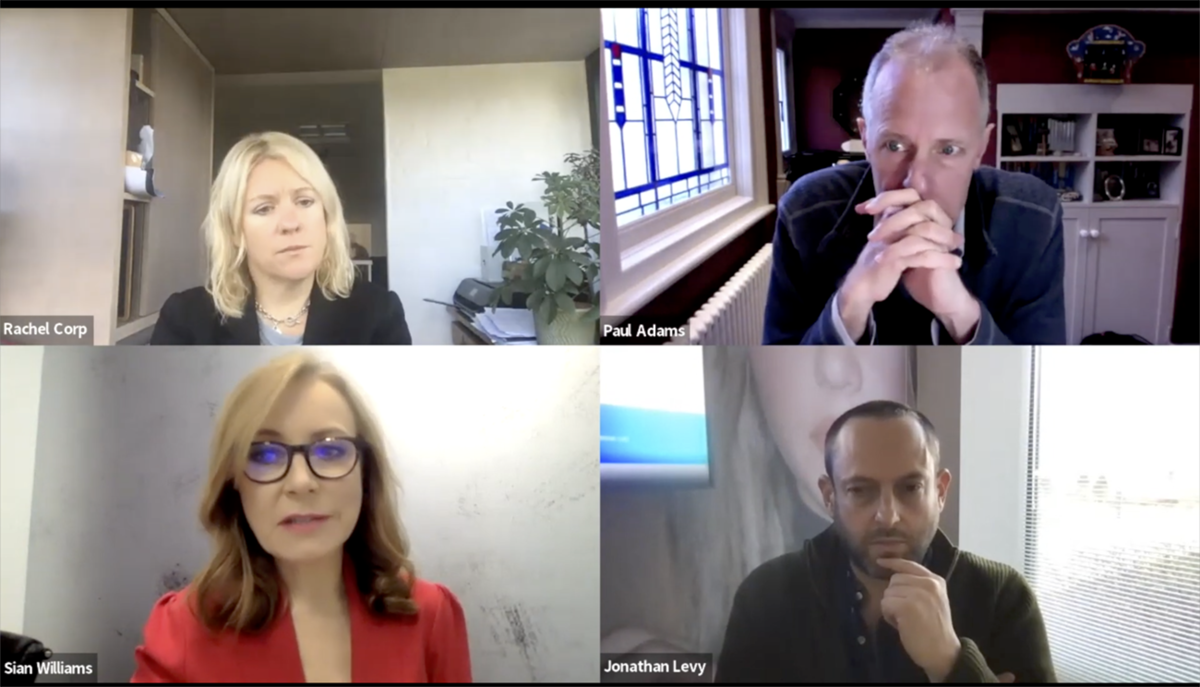
BBC diplomatic correspondent Paul Adams began reporting from Ukraine before the war broke out. He caught Covid just as the situation escalated: “I was on the floor physically, and I realised just how vulnerable mentally that makes you. You are much more prey to fear and anxiety when you’re tired than you are when you’re fit and well.”
In this situation, he had to balance the responsibility of self-isolation with personal safety. “After the first night of sleeping down in the bunker but trying to keep away from the others because I was still testing positive, I actually returned to my room,” he said. “But I thought, ‘If I do start hearing things go bang in the middle of the night, I’ll go down to the bunker with everyone else’.”
One of the challenges for broadcasters such as the BBC is to stay impartial. Western reporting paints Russia as the “bad guys” – but that’s justified, said Adams. “You have to get back to the fundamental truth that this was an unprovoked assault on a democratic country,” he said. “I can’t think of a conflict I’ve covered that felt less grey.”
The editor of ITV News, ITN’s Rachel Corp, agreed: “You can remain impartial but one thing we’ve talked about is that we shouldn’t lose our empathy when it comes to Russians who have been killed,” she said. “Holding on to your compassion through it all still makes it OK to be mostly telling the story of the horror that Ukrainians are going through.”
Adams said: “I’m assuming that is why none of our organisations have shown the live press conferences with Russian prisoners of war who have been paraded by the Ukrainians for political purposes, because they were willing to say that they were conscripts and that they didn’t know why they were fighting.”
This war follows the current media trend, with much of it being played out on social media. User-generated content posted on platforms such as Telegram is accepted as a valuable tool in war reporting, with fact-checking teams employed to verify material.
 “I remember when I was in the newsroom at Sky during the Arab Spring,” said Hassan, “videos came through that were sometimes automatically tweeted out by people, and it would transpire later that the video was from a different place or even another country. But we’ve learnt a lot and come a long way [since then].”
“I remember when I was in the newsroom at Sky during the Arab Spring,” said Hassan, “videos came through that were sometimes automatically tweeted out by people, and it would transpire later that the video was from a different place or even another country. But we’ve learnt a lot and come a long way [since then].”
For Corp’s verification unit at ITN, checking footage often involves running it past the team in the field, who have on-the-ground knowledge of locations and timelines. Geolocating is important: it also verifies the age of the footage. It is vital to cross-reference footage with other user-generated content and run information past fact-checking organisations such as Bellingcat and the Centre for Information Resilience.
As for the impact on people’s mental health of having to view graphic footage of the war, research suggests that those who watch disturbing images are at risk of post-traumatic stress disorder.
“We had it with Syria and with the Arab Spring, but I think there’s an intensity and a volume of [troubling raw footage] now and it’s relentless,” said Corp. She encouraged her staff to take breaks and to avoid footage they were uncomfortable with, and to lead by example. “The cumulative effect of these [images] makes me cry when I see them.… It’s about discussing with colleagues that it’s OK to take a break, to flag it if they’re struggling with it. Our mental health support is for them as well – it’s not just for the people who have been in Kharkiv or Mariupol. There’s nothing good about being desensitised to it.”
Williams offered advice from psychologists, such as looking at footage on fast forward or watching the visuals but not the audio. This helps to create a distance. Another technique is to make the window smaller on the screen – Corp said she sometimes views footage with her hand held in front of the screen.
For those reporting from the war zone, there are tried and tested approaches to mental health support, such as TRiM (trauma risk management). “I was TRiM trained about 15 years ago when I was at the BBC,” recalled Williams, who reported from Bosnia in the 1990s. “Then, it was quite hard to get journalists to come forward after they’d returned from something difficult.
“I think the conversation around mental health and resilience levels has changed fundamentally since then. Designed by a military psychiatrist, the debriefing – and certainly my own research with journalists in mental health shows that this processing with people who understand, who are often there with you – is one of the first steps towards being able to deal with it subsequently.”
Adams’ recent experience confirmed this. He described how, after he and his six-person team left Kyiv, they were told to stay in Romania, where a mental health professional would join them. “In the van that night, I think we all thought, ‘to hell with that. We want to get home quickly now’. We all tumbled into bed at about 4:00am, woke up the following day and thought, ‘Yeah, we’re going to stay here. This is a good idea. We’re together. We have lots to talk about.’
“The idea [is that] if you stay together, have that decompression, peace and quiet, and the ability to chat it through, you’re off to a good start.”
Take-up of aftercare has traditionally been lower than it perhaps should be because a typical trauma response is avoidance. Also, freelancers and those at the start of their careers are less likely to seek help, for fear of it harming their prospects or because they feel support isn’t available to them.
To counter this, news teams are now more proactive in delivering aftercare. Levy said: “We’ve slightly changed the emphasis and, when people come back, they get contacted by a specialist in trauma who has that initial conversation with them, and then a follow-up. You don’t have to seek it out, it comes to you.”
He added: “We’re all learning the whole time, both as individual organisations and collectively about how we can make operating in these types of places safer.
“What’s common is that all our organisations think it’s absolutely vital to be there on the ground and witness these stories and report on them if we can, and to work out how to do that in as safe a way as possible.”
Report by Shilpa Ganatra. ‘The fog of war: Ukraine – broadcasters on the front line’ was an RTS event held on 17 March. The producers were Sue Robertson and Steve Clarke.

